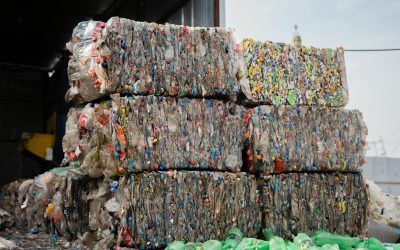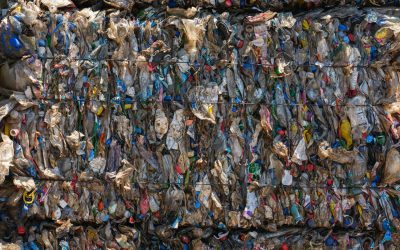Economists are warning of a possible recession in the near future, and there are now tighter quality restrictions for plastics and other materials shipped overseas. Thus, finding ways to streamline recycling operations is more important than ever.
Some say that recycling is recession-proof — even during the hardest economic times, people still need to consume goods, which results in waste. New goods also need packaging, which increasingly incorporates recycled materials. Yet, processing recyclable materials can be expensive due to a number of factors. In this article, we explore ways MRFs can reduce operating costs to remain profitable despite narrow margins and a lower demand.
Recycling Expenses
In 2018, China developed their “National Sword” policy, which closed their doors to imported recycled materials from other countries. Prior to this, China was handling nearly half of the world’s recyclable materials.
At that time, many countries were exporting these materials instead of developing their own efficient material recovery facilities. Scrap material prices took a big hit because many countries and municipalities were faced with the challenge of properly recycling their own materials for the first time.
Some of the costs of recycling include:
- Transportation
- Operating machinery
- Maintenance
- Sorting recyclables
- Labor
- Disposing items that were incorrectly placed in recycling or have been contaminated
Another possible cost is extra labor caused by wishcycling, which is when a material is considered recyclable even though there’s little to no evidence of this.
How Much Does It Cost to Recycle Different Materials?
Metals
Generally speaking, metals are some of the most valuable recycled materials. In fact, aluminum cans are 100% recyclable, and it costs 95% less to recycle aluminum versus producing new aluminum.
Electronic Waste
All sorts of valuable metals can be found in electronic waste (e-waste). Recycling e-waste can be a challenge because of material contamination and the extra time it takes to process these complex products.
Plastic
The polyethylene terephthalate (PET) that’s used to manufacture water and soda bottles, as well as bottles for household cleaning products, is one of the most commonly recycled plastics. Its profit margin is smaller than other materials, but high demand for recycled PET from manufacturers has increased its price over virgin PET.
It’s important to note that some plastics are used less than they once were due to packaging costs. For example, many companies in the packaging industry are opting to use lightweight plastics for their products as a way to cut transportation costs; but making these items lighter can make them less profitable for recyclers.
Need equipment that can help with MSW costs?
How can MRFs Reduce Operating Costs?
Produce Cleaner Material
To run a profitable MRF, you need to produce clean, top-quality materials. If you can improve the quality of recovered materials that are sold in the market, you’ll exceed customer expectations and generate long-term relationships with customers. Additionally, you’ll lessen your chances of having materials rejected.
Improve Labor Quality
Another step you can take towards reducing recycling facility costs is making sure your staff members are properly trained for sorting, and they are comfortable. Providing a safe, pleasant work environment with all the proper equipment and conveyor systems helps to prevent problems and increase waste stream volumes.
Increase Screening Efficiency For Better ROI
Efficiency is crucial for an MRF. If you’re designing a new facility from scratch, make sure to keep safety and efficiency in mind. If possible, your facility should be easily accessible and located close to the local population, to help cut transportation costs.
At AEI, we specialize in custom-engineered solutions for MRFs. Our Freedom Disc Screen can process even the most difficult waste materials without wrapping or plugging the screen. This results in more uptime and less cost sunk into maintenance. It also means higher feed capacity for facilities processing large volumes of waste.
To learn more about the Freedom Disc Screen, please feel free to contact us or give us a call at 717-656-2131.


